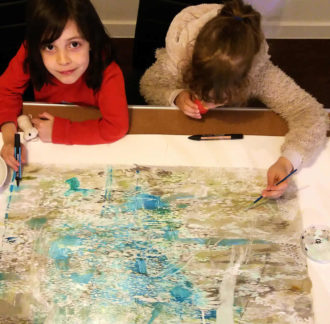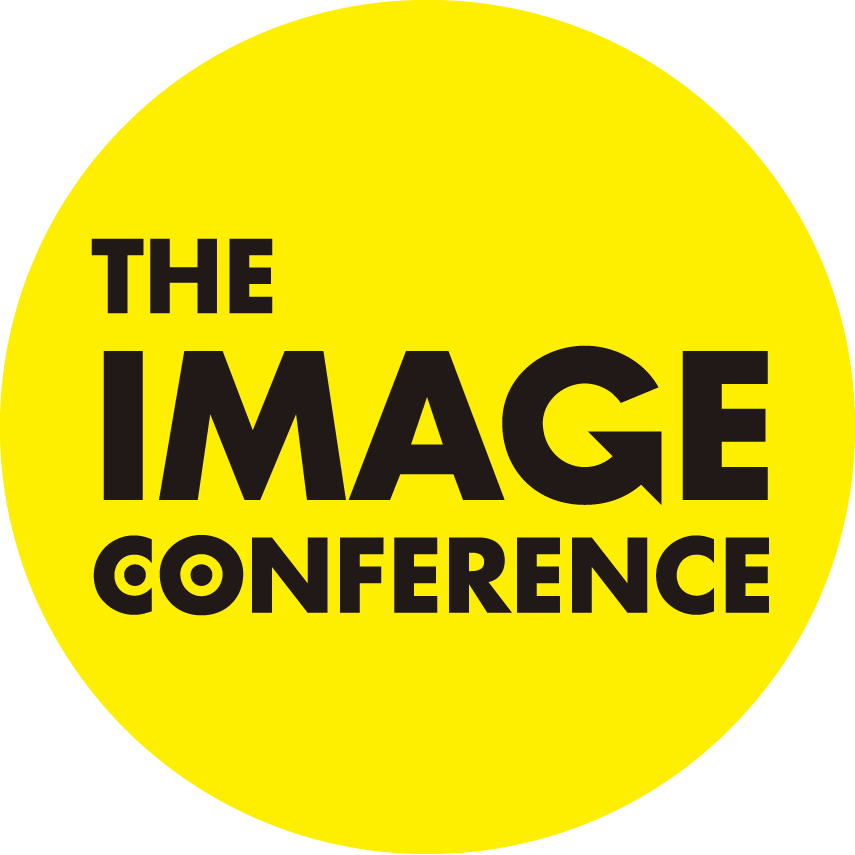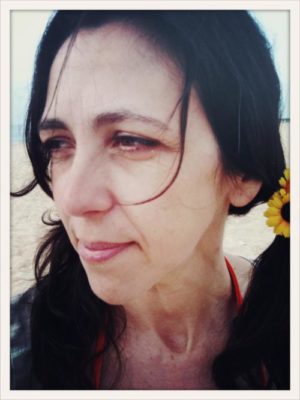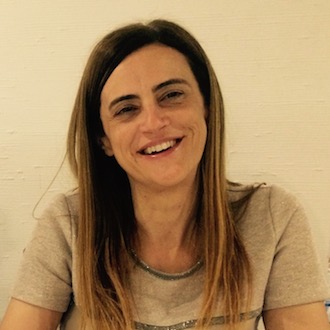
Emma Pratt is writing about her workshop ‘Ways of Seeing’ at The Image Conference in Athens.
As artist in residence at IATEFL last year I spent the week in a temporary studio creating visual work that responded to the plenary speakers’ presentations. Being in one place and having a fixed brief for the conference gave me the chance to watch and observe. I watched people rush by mostly. Running from one session to the next trying to take in as much as possible. During a workshop I gave at the GISIG pre-conference day there was an unexpected moment during a moment of drawing, everyone had fallen into silence. It was peaceful. Everyone was absorbed. Everything slowed down just for a moment. The combination of observations left me thinking and the concept of this workshop for the Image Conference in Athens 2018 with the Visual Arts Circle and GISIG was born.
Speed. Now.
I doubt there is anyone who would argue against the observation that our lives are full of noise. Learning research in talent resources are talking about “learning like a millennial”. The new approaches to corporate learning are increasingly focused on performance support and quick, timely pieces of knowledge fed just at the right time. It falls in line with how we consume knowledge and information generally. Many companies have in their sign-up bundles for employees, alongside the personal trainer, a free login on to a learning platform where they can take any course they please, working related or not. It’s all very agile and responsive. Agility is part of the present and future workforce. Developments in AI and assistive technologies mean that a company these days has an average lifespan of 18 years (Lumesse Learning Report 2018). So that means we have to be ready to shift too.
Still. Space. Void. Pause. “Ma”.
In western cultures, the cultures in which I have been raised, there is at times a discomfort with silence. We feel we need to keep talking in conversations. We find pauses awkward and need to fill the gaps. Let’s take the concept of “ma”「間」. Many Japanese art forms contain within them the Japanese concept of “ma” 「間」. For example, I read the instructions the other day of some Japanese ink that is ground on a stone with water in a specific way before painting. The instructions included the gentle insistence that the preparation be done without T.V, music, noise or speaking. When you practice calligraphy, one of the disciplines required is that you clear your mind to focus on each stroke of the character. Your thoughts following your hand, your hand following your thoughts.
Why I Draw
Drawing helps me move what I sense, perceive and feel, both new and old, into some kind of deeper other “thing”. This deeper other “thing” could be learning, understanding, or a deeper experience of something that may not end in understanding, but at least a deeper acknowledgement.
Most of my visual work these days is made alongside children. This has been the natural result of having them and art in my life simultaneously. I’ve taken an eco-system approach to art making, family, our community, the world around us and learning. Each influences the other. Nothing is isolated. To take this practice further, I am currently working on a body of work as a teaching artist in a local primary school. I am not there to “teach art”. I am there to simply be myself, an artist developing her work, there in and around the children. I am comfortable with people coming and drawing with me, even picking up a pen and adding to my work. Meanwhile, conversations happen, stillness happens, observations are made. Connection and awareness bud.
Moving into Effective Processing Headspaces
According to Cognitive Load Theory, we need to look at ways with how we teach, to help move information from our short-term memory into long-term memory where we create schema. This schema is then drawn on to make sense of new information as it is added. Artists make use of drawing to help process ideas. In this workshop, we’ll look at how drawing approaches, especially when the focus is on process, can help get people pondering, wondering and mulling over new information.
Anyone can draw with the right support, approaches and especially if the focus is on process over product. Any teacher can make use of drawing to help get their students seeing. We will look at drawing exercises that are simple and easy to set up and use, as a means to opening up our eyes, finding a headspace to reflect, and making things memorable.
Session: Sunday 11am 7 October 2018
Emma Pratt BIO
Emma Pratt began her ELT career in 1999. She is co-founder and director of Frameworks Education Group, the developer of the 2016 ELTons nominated TEFL Preparation Course from ELTcampus, an online platform she also co-founded and developed. She is a teacher developer, online learning developer, writer and member of the Visual Arts Circles. She is a practicing artist with a degree in Fine Arts, a post-graduate in Museology. She has also worked in museum education and run a nation-wide Artists in Schools project in New Zealand. She is currently a teaching artist in a project with children in a local primary school in Cambridge UK.





